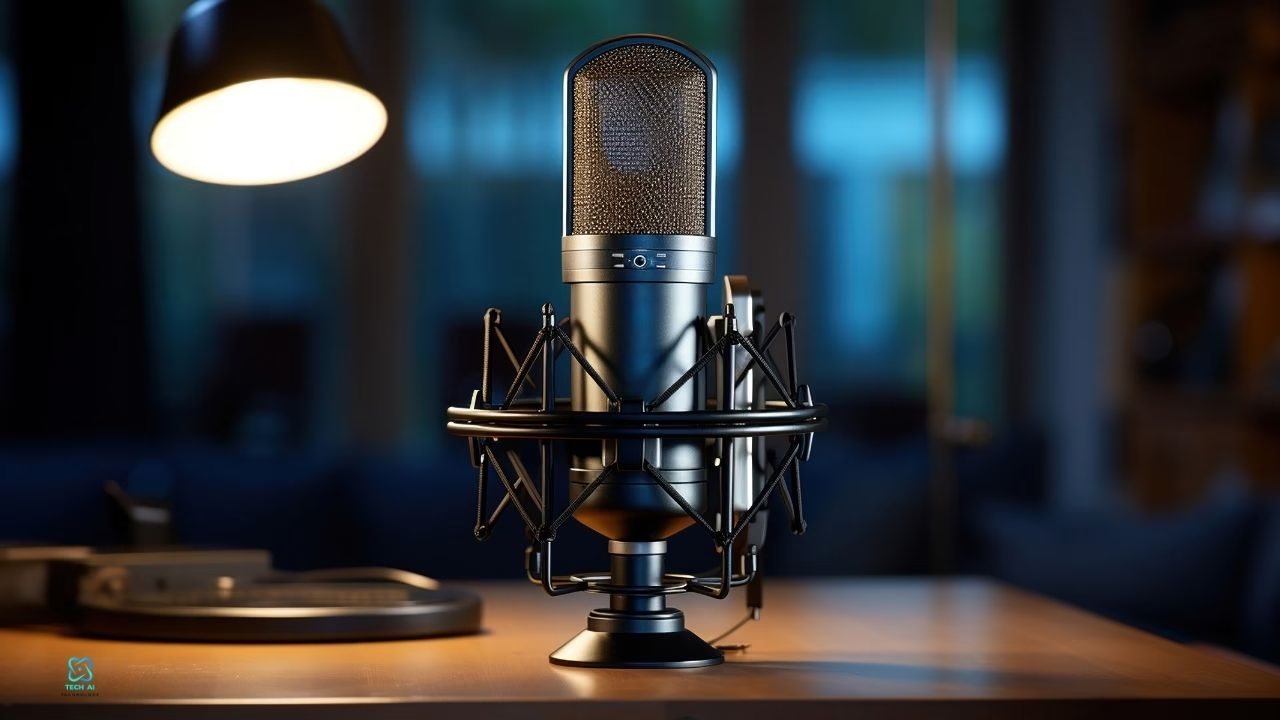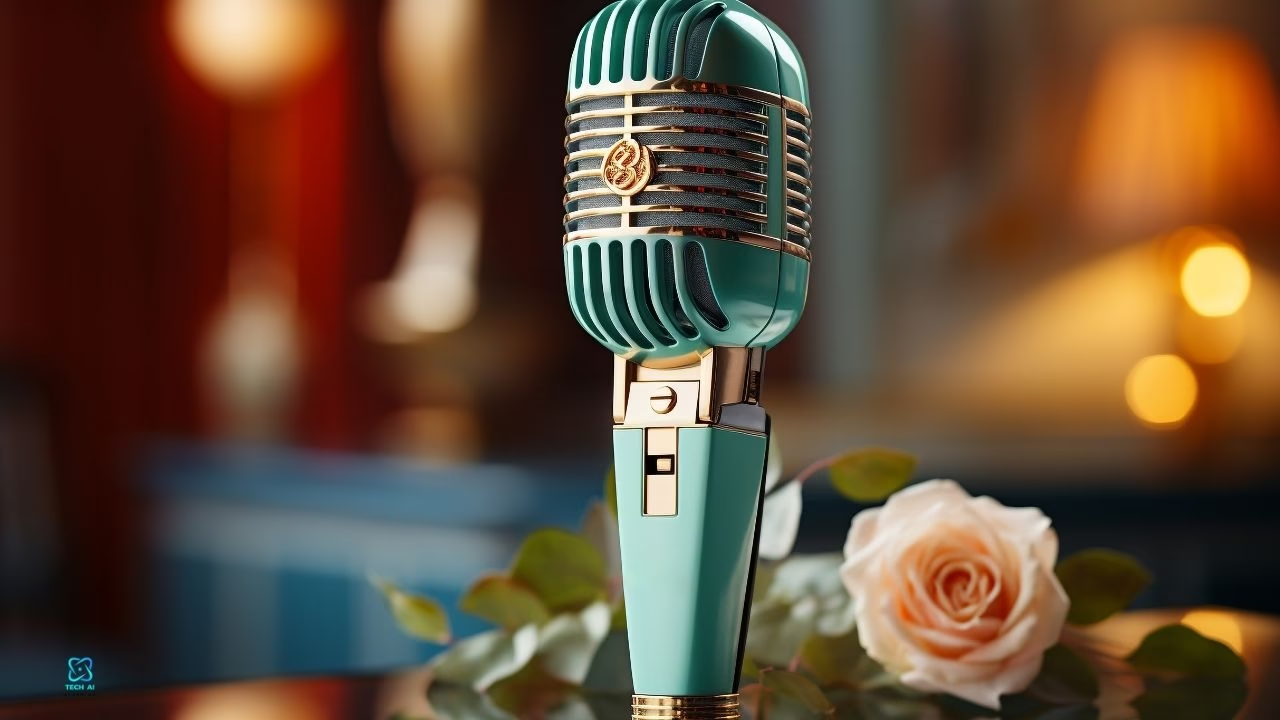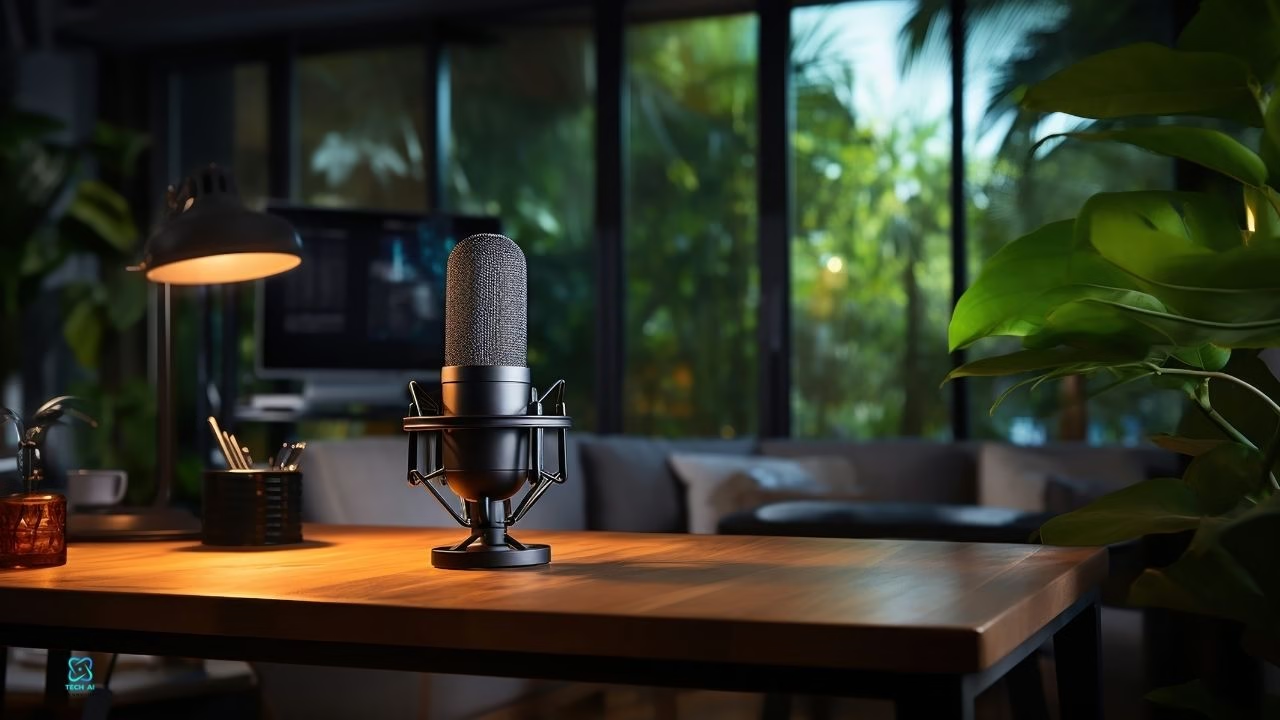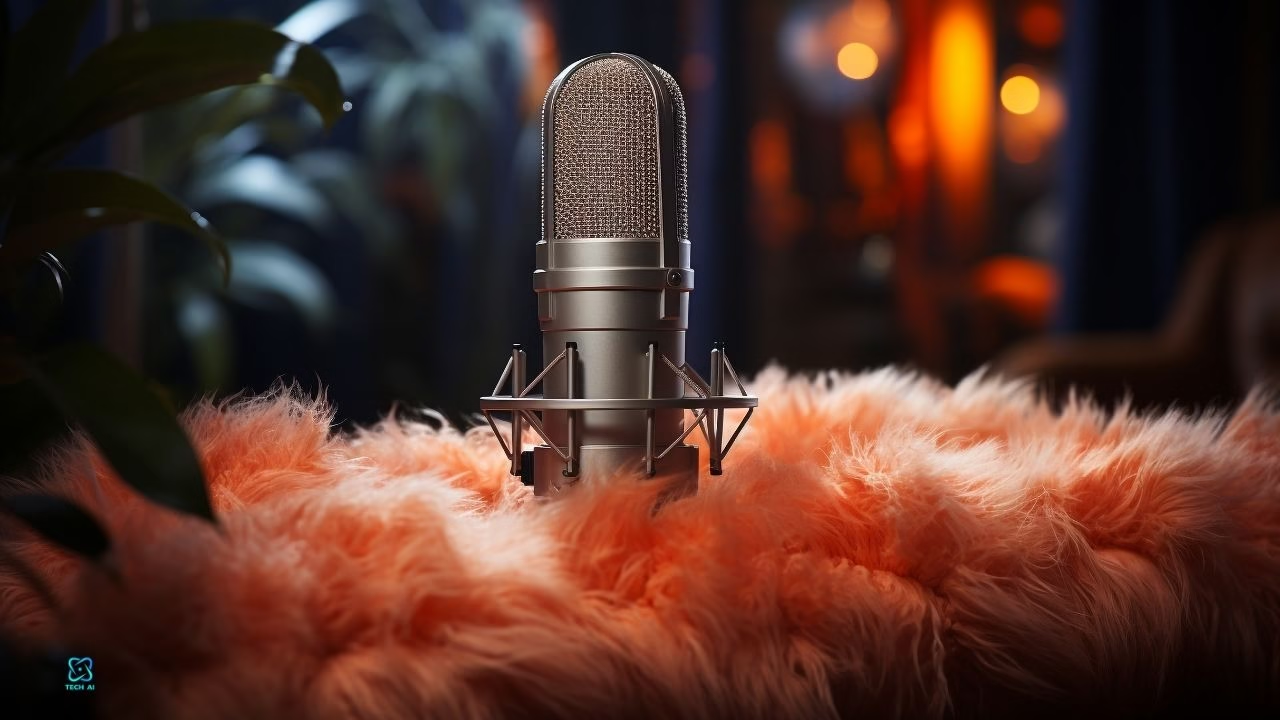The combination of sound and word placement is the key to a gripping narrative audiobook, exploring unique audio quality by finding the Best Microphone for Audiobook Recording.
Similar to how an artist selects the perfect instrument for a masterpiece, choosing the right microphone is the first step in producing a flawless audio experience. Go on an expedition where every little thing is noted, every tone has meaning, and every word becomes a note in the story’s rhythm.
Elevate your audiobook creation to new heights as we step into a world where pen meets microphone, creating not just a story but a completely touching experience.
Best Microphone for Audiobook Recording
Hunting for the best microphone for audiobook recording? High quality recordings are essential to create engaging audiobooks. An excellent microphone may make all the difference in the world since it can capture each detail of your voice and guarantee a flawless speech.
Crystal Clear Audio with Condenser Microphones
Probably the most famous quality of condenser microphones is their ability to amplify sound from their source and encompass its full dynamics, from the highest pitch to the deepest bass. When recording audio books, condenser microphone may give accurate, clear and precise sound nakedly manifesting all the tones of your voice.
USB or XLR Connectivity for Convenience
There are microphones that offer ports to connect in between the output in the microphones as you opt for either a USB or an XLR. Even though XLR connectivity makes it possible to connect with so many other interfaces to enhance control, USB mics are specially branded interfaces that do not require users to configure the mics.
What exactly is XLR, then? It is not able to be linked to your computer directly.
The most popular type of XLR cable is the 3 pin model, which is used to connect practically every item in a home studio, studio, or even on stage.
Since XLR is an analog connector, if you want to record audio on your computer or smartphone and wish to go into the digital realm, you’ll need an audio interface.
And USB microphone is my preferred choice for online gaming, streaming, and meetings due to its convenience. It features a dedicated mute button and is equipped with routing software. The entire device is made for these uses.
Noise Reduction Technology for a Distraction Free Experience
Make your listening experience easy by selecting a microphone that has noise cancellation built in. This guarantees that ambient sounds are reduced, enabling your audience to concentrate on your story without any disturbance.
Durability and Portability
Think about the useful features of your recording configuration. Having an effective and lightweight microphone is important especially when recording in different places. To meet your needs for recording while you’re on the road, look for factors like a small design and solid build.
Affordable Excellence
Despite what many people think, high end microphones for audiobook recording don’t have to be extremely expensive. All prospective audiobook writers may now achieve professional level narration thanks to the variety of affordable choices available in the market that offer outstanding performance.
Factors to Consider When Choosing a Microphone
Microphone Types
Looking closer at audio capture, people can notice that microphone kinds are indeed extremely diverse. Often used for live performances, dynamics are the most durable type of mics in the market.
Condenser microphones are fragile and are perfect for studio use as they yield clean vocal sounds and complicated audio instrumental components. Shotgun microphones today are ideal for broadcasting and movies. Lavaliere microphones are miniature in size and quite often employed in presentations and interviews. Ribbon microphones sound warm and very natural and are famous for their classic looks.
The factors that must be considered while choosing Condenser, Dynamic and Ribbon microphones for live show or studio recording area sensitivity, durability, and tone.
Precision, objective truth, and flexibility exist in a galaxy of sounds each of the microphone categories reveal.
Polar Patterns
Microphone sensitivity is determined by audio polar patterns, such as cardioid, unidirectional, and bidirectional.
Cardioid microphones are front facing and perfect for solo singers. omnidirectional recordings, excellent for background noise, come from any angle. For interviews or duets, bidirectional patterns are ideal for capturing both the front and rear.
By being aware of these patterns, producers may minimize interference during recording by selecting the ideal microphone. Sources are isolated by cardioid in controlled settings. Omnidirectional speakers offer a rich, varied sound experience.
Essential to audio technology, these patterns guarantee clarity in a range of recording situations. They are referred to by artists and musicians for polished, excellent output.
Top Microphones for Audiobook Recording

Neumann, A. TLM 103
The Neumann TLM 103 is one of the most desired studio microphones in the market and its great features make audiobooks possible. Because it is a large diaphragm condenser microphone that is designed by professional narrators and voice actors, it captures sound with great accuracy.
Features
The cardioid polar pattern of the TLM 103 ensures concentrated sound capture while reducing background noise. A wide range of speech tones is supported by its outstanding frequency response (20Hz–20kHz), and the transformer less circuit ensures minimum self noise, improving the clarity of recorded audio. Its sleek and small form, together with the matte nickel finish, adds a sophisticated touch to any recording setup.
Pros:
- Excellent Sound Quality: The TLM 103 is frequently praised by users for its studio caliber audio output, which captures the subtleties of the narrator’s voice with unmatched clarity.
- Low Self Noise: The transformer less construction of the microphone guarantees a low level of self noise, resulting in a clear and expert sound recording.
- Solid Construction: Designed with accuracy and longevity in mind, the TLM 103 is a dependable purchase for extended audiobook recording endeavors.
Cons:
- Cost: The Neumann TLM 103 may be too expensive for certain users, who feel it to be more expensive than others. As a result, those on a tight budget may find it more difficult to afford.
- Sensitivity to Plosives: If the microphone does not have an internal pop filter, it may be too sensitive to plosive noises. In this case, using an external pop shield will be necessary for best results.
Audio Technica AT2020
With its excellent features, advantages, and certain things to bear in mind, the Audio Technica AT2020 is a standout option for audiobook production. Let’s examine some of its unique features:
Features:
The AT2020 minimizes background noise while capturing audio precisely, thanks to its cardioid polar pattern. Its broad frequency response (20 Hz–20 kHz) guarantees an accurate and precise recording. Low mass diaphragm technology is used in this condenser microphone to provide enhanced transient response and extended frequency response.
Pros:
- Crystal Clear Audio: Customers frequently compliment the AT2020 for producing natural sounding audio that captures the subtleties of speech articulation.
- Solid Construction: Designed with longevity and dependability in mind, the microphone’s sturdy design guarantees lifespan.
- Affordability: The AT2020, which is priced in the mid range, offers exceptional value for its caliber and opens you access to professional caliber recording.
Cons:
- Sensitivity to Handling Noise: According to some users, the microphone can be sensitive to handling noise and vibrations, so caution is advised when using it.
- Absence of Built in Shock Mount: The AT2020 lacks a built in shock mount, which may be a factor for people looking for further vibration isolation compared to certain rivals.
Shure SM7B
Features
The Shure SM7B is unique in that it is marketed for audiobook recording more than any other kind of recording. Thanks to its broad wide frequency response and its smoothness characteristics, it captures all the nuances of speech. Due to its cardioid polar pattern the ambient noise is rejected and focused sound is accepted. Tan defines that the vibrations have been minimized by the application of air suspension shock isolation technology and thus affording clear sound reproductions. They can also travel quite a far distance since they are built firmly, profoundly, and traditionally, and can thus serve as a great long-term investment to audiobook narrators.
Pros
- Outstanding Sound Quality: The Shure SM7B is widely praised by users for its ability to create warm, genuine tones, which improves the overall quality of the music.
- Versatility: The microphone is highly versatile and performs exceptionally well in a range of recording environments, which is why audiobook narrators, podcasters, and musicians love it.
- Effective Noise Reduction: A clear and expert recording is ensured by the cardioid polar pattern and sophisticated shock isolation mechanism, which greatly decreases background noise.
- Durability: The Shure SM7B is made of premium materials and was designed with longevity and dependability in mind, even with frequent usage.
Cons:
- Requires Strong Preamplification: According to some users, in order to fully utilize the Shure SM7B, a strong preamplification configuration is necessary, which might raise the total cost.
- Lack of USB Connectivity: Not having USB connectivity may be a little annoyance for anyone looking for a plug and play solution. To connect, you’ll need an external audio interface.
- Hefty Price Tag: The Shure SM7B’s qualities make it worth the money, but for individuals on a limited budget, it may be too expensive.
Budget Considerations

When it comes to entry level mics for audiobook recording, there are three that stand out to both aficionados and novices.
Blue Yeti
Prominent for its intuitive USB interface, the Blue Yeti is a well liked option that provides plug and play ease of usage. With the help of its adaptable features, which include many polar patterns and an integrated gain control, users can easily produce recordings of high quality.
Audio Technica ATR2100x USB
The Audio Technica ATR2100x USB is a dependable option that has been commended for its dynamic cardioid pickup pattern, which enables precise and concentrated speech recording. Thanks to its dual USB/XLR connectivity, it can be used in a variety of recording settings, which makes it popular with entry level users who are looking for versatility.
Fifine K669B
The Fifine K669B is another choice worth mentioning because of its reputation for being reasonably priced without sacrificing performance. The Fifine K669B, which offers plug and play USB connectivity and a cardioid polar pattern, is a budget friendly option that produces audio quality suitable for audiobook narration. With each of these entry level mics providing unique benefits, aspiring narrators and content creators should confidently investigate them in their search for premium, affordable audio recording options.
Tips for Optimal Audiobook Recording

Proper Room Setup
The first step towards getting immaculate audiobook recordings is having an orderly space. For best results, record in a calm area that isn’t filled with background noise. Reduce outside noise by using soundproofing materials, such as drapes or acoustic panels. Make sure the lighting is ideal for a relaxed recording setting that will foster concentrated narration.
Microphone Placement
Placing the microphone strategically is essential to getting crystal clear audio. To reduce plosive noises, place the microphone at a comfortable height and tilt it slightly below lip level. Aim for a distance of 6 to 8 inches to get the perfect blend between closeness and visibility. Try several angles to find the best alignment for your narration style and voice.
Adjusting Levels and Gain
Gain and level adjustment is a skill that must be mastered for a professional audiobook recording. Adjust the input settings on your microphone to avoid distortion and guarantee that your speech is recorded clearly. Adjust the gain settings to your story’s dynamics, taking care to prevent both harsh peaks and muted tones.
Post Processing Techniques
Improve the quality of your audiobook recordings by using efficient post processing methods. To balance audio levels, smooth out speech tones, and remove background noise, use audio editing software. Use equalization to adjust frequencies and produce a well rounded, rich sound. Try adjusting the compression parameters to reduce fluctuations in loudness and produce a final output that is polished and expert.
FAQ:
Q1: What makes a microphone suitable for audiobook recording?
The ideal audiobook microphone should have a cardioid polar pattern, low self noise, and wide frequency response to capture clear and natural vocal tones. USB or XLR connectivity options are also important for compatibility.
Q2: Is a USB microphone sufficient for audiobook recording, or should I invest in an XLR microphone?
Both options can work, but an XLR microphone is generally preferred for professional audiobook recording due to better audio quality and the ability to use external audio interfaces for advanced controls.
Q3: What is a cardioid polar pattern, and why is it important for audiobook recording?
A cardioid pattern captures sound mostly from the front while minimizing background noise. This is crucial for audiobook recording as it focuses on the narrator’s voice and reduces unwanted environmental sounds.
Q4: How important is low self noise in a microphone for audiobook recording?
Low self noise is crucial as it ensures minimal interference from the microphone itself, resulting in a cleaner and more professional recording without unwanted hissing or humming sounds.
Q5: Are there any specific microphone models recommended for audiobook recording?
Popular choices include the Audio Technica AT2020, Shure SM7B, and Rode NT USB. However, the best microphone depends on individual preferences, budget, and the recording environment.
Q6: Can I use a condenser microphone for audiobook recording, or should I choose a dynamic microphone?
Condenser microphones are commonly used for audiobook recording due to their sensitivity and wide frequency response. However, dynamic microphones can also be suitable, depending on the specific requirements and preferences.
Q7: How important is a pop filter or windscreen when recording audiobooks?
A pop filter or windscreen is crucial to minimize plosive sounds (like “p” and “t” sounds) and reduce breath noise, ensuring a smoother and more enjoyable listening experience for the audience.
Q8: Do I need additional accessories, such as a shock mount or boom arm, for audiobook recording?
While not mandatory, a shock mount can reduce vibrations and handling noise, and a boom arm provides flexibility in positioning the microphone. These accessories can contribute to a more comfortable and professional recording setup.
Q9: What factors should I consider when choosing a microphone for audiobook recording in a home studio?
Consider the room acoustics, background noise, and your budget. Choose a microphone that suits your voice and provides the necessary features for a controlled and high quality recording in your specific environment.
Q10: Can I use my smartphone or headset microphone for audiobook recording?
While possible, using dedicated microphones designed for audiobook recording is highly recommended for better audio quality and a more professional result. Smartphone and headset microphones may not meet the standards required for audiobook production.
Conclusion:
In short, choosing the finest microphone for audiobook recording is an essential first step to guaranteeing the greatest caliber and clarity of the finished output. An appropriate microphone reduces background noise and catches the subtleties of the narrator’s voice, giving the listener a polished and engrossing listening experience.
The best microphone for a given situation might change according to personal preferences, financial limitations, and the recording setting. But putting durability, sensitivity, and frequency response first will result in a microphone that improves the audio quality of audiobook recordings as a whole.
Purchasing a top notch microphone is an investment in the success of audiobook production since it is essential to providing a seamless and engrossing listening experience.

